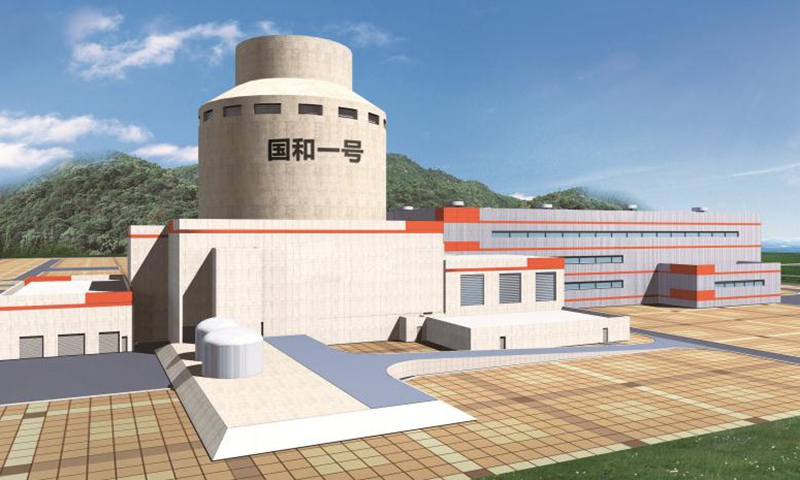Nation demonstrates third-generation nuclear reactor CAP1400
By Huang Lanlan and Chu Daye Source: Global Times Published: 2020/9/28 18:52:52

An effect picture of Guo He One. Photo: Courtesy of Shanghai Nuclear Engineering Research & Design Institute
The research and development work for China's domestic third-generation nuclear reactor project called CAP1400 (Guo He One) has been completed, State Power Investment Corp (SPIC) announced on Monday.
The US-launched trade war and Washington's technological restrictions on Chinese companies won't contain the development of the advanced CAP1400, SPIC said at a press conference on Monday.
Based on the third-generation nuclear technology AP1000, imported from the US in 2007, CAP1400 has made great technological innovations through 12 years of hard work by more than 26,000 Chinese technology engineers, said Zheng Mingguang, chief designer of CAP1400 nuclear reactors.
Equipment is also essential to the sustainable development of nuclear projects, apart from the technologies. Some 90 percent of CAP1400's equipment is domestically made, with all its key parts and materials including the main pump being domestically designed and produced, Zheng said.
CAP1400 has broken overseas technology monopolies in many areas and owns independent intellectual property and export rights, said Lu Hongzao, assistant general manager of SPIC.
Compared with second-generation reactor, it extends the non-manual intervention time from 30 minutes to 72 hours, and dramatically improves safety performance against natural disasters including earthquakes and floods by 100 times, Lu said.
SPIC is promoting the Guo He One brand for export. It is discussing potential partnerships with countries including Turkey and South Africa, Hao Hongsheng, general manager of the SPIC's nuclear energy department, told the Global Times on Monday, saying the technolog will be competitive in the global market with relatively high degree of safety and low costs.
"We are totally confident about exports of Guo He One," Hao said, adding that the construction cost for the reactors can be reduced by 20 percent after achieving mass production.
Lin Boqiang, director of the China Center for Energy Economics Research at Xiamen University, said with the first- and second-generation nuclear reactors being phased out, third-generation technology will become mainstream.
"In this context, having an additional domestic nuclear technology beyond the Hualong One is of great value to China both in terms of exporting nuclear technology and the domestic development of China's nuclear industry," Lin said.
In China, per capita electricity consumption will reach 5,000 kilowatt-hours (kWh) this year, the National Energy Administration estimated. Therefore, a single Guo He One reactor can meet the electricity demand of 22.8 million residents with its annual output of 11.4 billion kWh, SPIC said.